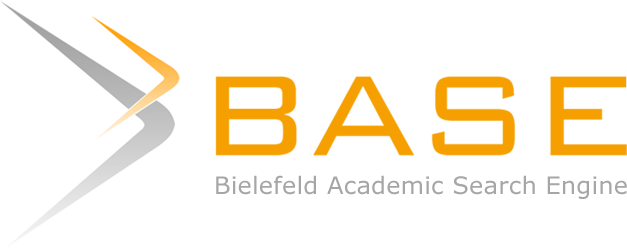Dampak Model Pembelajaran Treffinger terhadap Kemampuan Berpikir Kreatif Siswa dalam Pembelajaran Matematika
DOI:
https://doi.org/10.51574/judikdas.v2i3.764Keywords:
Treffinger, Model Pembeljaran, Kemampuan Berpikir Kreatif, Pembelajaran MatematikaAbstract
Penelitian ini bertujuan untuk menunjukkan perubahan yang ditimbulkan terhadap kemampuan berpikir kreatif siswa dalam pembelajaran matematika. Penelitian ini dilaksanakan pada semester ganjil tahun pelajaran 2022/2023 di MTs Yasrib Limpomajang dengan melibatkan siswa sebanyak 45 siswa. Instrumen penelitian yang digunakan dalam penelitian ini adalah tes kemampuan berpikir kreatif meliputi lembar pretest dan posttest. Tes kemampuan berpikir kreatif tersebut disusun berdasarkan indikator kemampuan berpikir kreatif. Pada penelitian ini, kegiatan pembelajaran dilaksanakan dengan mengikuti perangkat pembelajaran meliputi Rencana Pelaksanaan Pembelajaran (RPP) dan Lembar Kerja Siswa (LKS). Hasil penelitian menunjukkan bahwa model pembelajaran Treffinger merupakan situasi pembelajaran yang tepat memberikan dampak perubahan terhadap aktivitas pembelajaran peserta didik. Aktivitas yang dirancang secara sistematis dan terstruktur tidak hanya memberikan kesempatan belajar kepada siswa, tetapi perubahan dalam mengembangkan kemampuan berpikir kreatif. Di dalam penelitian ini, perubahan itu ditunjukkan dengan kemampuan siswa untuk mengungkap jawaban mereka tidak hanya secara prosedural, tetapi menggugah untuk menunjukkan literasi yang dimiliki dengan deskripsi yang semakin jelas dan mudah untuk dipahami.
References
Amanoe, Z., & Isnarto. (2021). The mathematical creative thinking ability of students viewed from learning motivation by using Treffinger learning model. Unnes Journal of Mathematics Education, 10(1), 45–51. https://doi.org/10.15294/ujme.v10i1.37759
Azzajjad, M. F., Halima, H., Rahayu, A., & Ahmar, D. S. (2023). Treffinger Learning Model Assisted by PPT Media is it Affects Student Learning Outcomes? Athena: Journal of Social, Culture and Society, 1(2), 50–57. https://journal.mediadigitalpublikasi.com/index.php/athena/article/view/17
Bachtiar, M. Y. (2022). Inovasi Pembelajaran Daring dan Dampak Bagi PAUD Selama Pandemi Covid-19. 6(2), 1007–1019. https://doi.org/10.31004/obsesi.v6i2.1411
Handayani, R. (2020). Efektivitas perangkat pembelajaran menggunakan model Treffinger untuk meningkatkan kemampuan berpikir kreatif. At- Tarbawi, 12(1), 93–107. https://doi.org/10.32505/tarbawi.v12i1.2062
Juniar, E. T., & Sapri, J. (2020). PENERAPAN MODEL PEMBELAJARAN TREFFINGER UNTUK MENINGKATKAN KREATIVITAS DAN KEMAMPUAN MENULIS TEKS DESKRIPSI. 10(1), 47–54. https://doi.org/https://doi.org/10.33369/diadik.v10i1.18102
Lambertus, L., Salam, M., Rezkiati, Suhar, & Hasnawati. (2023). DEVELOPING MATHEMATICAL CREATIVE THINKING (CT) ABILITY STUDENTS THROUGH THE TREFFINGER LEARNING MODEL (LM). 12(1), 23–35. https://doi.org/https://doi.org/10.24127/ajpm.v12i1.5432
Larasati, D. A. (2020). Pengaruh Model Treffinger terhadap Keterampilan Berpikir Kreatif Mahasiswa Pendidikan Guru Sekolah Dasar. Musamus Journal of Primary Education, May, 130–139. https://doi.org/10.35724/musjpe.v2i2.2331
Nasrullah, & Baharman. (2018). Exploring Practical Responses of M3LC for Learning Literacy. Journal of Physics: Conference Series, 954(1). https://doi.org/10.1088/1742-6596/954/1/012007
Ningsih, P. R. (2013). Penerapan Metode Realistic Mathematics Education (RME) Pada Pokok Bahasan Perbandingan Senilai dan Berbalik Nilai Di Kelas VII E SMP IPIEMS Surabaya. Gamatika, 3(2), 177–184. http://www.journal.unipdu.ac.id/index.php/gamatika/article/view/377
OECD. (2019). PISA 2021 creative thinking framework. Oecd, 53(9), 1689–1699. https://www.oecd.org/pisa/publications/PISA-2021-creative-thinking-framework.pdf
Ruslan, R., Alimuddin, A., & Nasrullah, N. (2018). Developing Alternative Assessment of Mathematical Performance for Vocational Students. Innovation of Vocational Technology Education, 14(1), 32. https://doi.org/10.17509/invotec.v14i1.11045
Treffinger, D. J. (2007). Creative Problem Solving (CPS): Powerful Tools for Managing Change and Developing Talent. Gifted and Talented International, 22(2), 8–18. https://doi.org/10.1080/15332276.2007.11673491
Wiratman, A., Ajiegoena, A. M., & Widianti, N. (2023). PEMBELAJARAN BERBASIS KETERAMPILAN PROSES SAINS: BAGAIMANA PENGARUHNYA TERHADAP KETERAMPILAN BERPIKIR KRITIS SISWA SEKOLAH DASAR?. Pendas: Jurnal Ilmiah Pendidikan Dasar, 8(1), 463-472.
Downloads
Published
How to Cite
Issue
Section
License
By submitting an article manuscript, the author agrees to all policies set forth by the journal and publisher.
The author declares that:
- They have been authorized by their co-authors to enter into this agreement.
- The work described has not been officially published before, except in the form of an abstract or as part of a lecture, review, thesis, or preprint journal.
- The work is not currently under consideration for publication elsewhere.
- Its publication has been approved by all authors and by the responsible authorities—either implicitly or explicitly—of the institution where the work was conducted.
- They have obtained the right to reproduce any material that has been published or copyrighted elsewhere.
- They agree to the following license and copyright agreement.
License and Copyright Agreement
Authors publishing in Jurnal Ilmu Pendidikan Dasar Indonesia agree to the following terms:
- Authors retain copyright and grant the journal the right of first publication with the work simultaneously licensed under a Creative Commons Attribution-ShareAlike (CC BY-SA 4.0) License, which allows others to share the work with acknowledgment of the authorship and initial publication in this journal.
- Authors may enter into additional non-exclusive contractual agreements for the distribution of the journal's published version of the work (e.g., posting it to an institutional repository or publishing it in a book), with acknowledgment of its initial publication in this journal.
- Authors are permitted and encouraged to post their work online (e.g., in institutional repositories or on their websites) before and during the submission process, as this can lead to productive exchanges, as well as earlier and increased citation of the published work.



1.png)
3.png)




